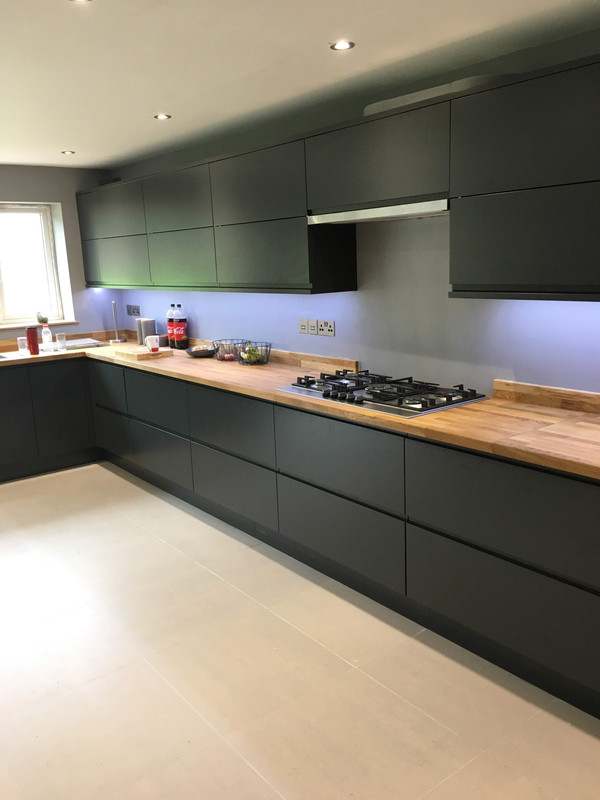There are only a few tasks in a ‘normal’ kitchen and bathroom installs that are not easily DIYable. The main challenge is the cumulative impact of all the tasks you need to do in quick succession and as a DIYer, I’m never going to be as fast.
Some types of finish are more difficult to obtain as a DIYer but I’d just avoid them or get someone in to do that specific element.
Im just finishing up our kitchen from DIY kitchens and it looks great, I got electricians and gas people in for those parts I’m not allowed to do.
I’d encourage anyone to have a go, generally you don’t need loads of specialist tools for a lot of finishes either. A router for a kitchen is a must but you can get one and a cutter for under £130 that will do the job.
I agree and disagree.
Having done 2 kitchen refurbs and on my second bathroom I stand by that compared to the vast majority of DIY they are a cut above.
You have to consider way more in these areas, will stuff fit properly, water proofing, some limitations on elec/gas as you mention etc
Overall I believe the most difficult thing is time as I mentioned.
You like I are obviously "handy" as my operations manager describes it, but plenty are just lol, if your just lol your never ever going to do a kitchen or bathroom refurb.
I mean I know someone who jumped in to help someone else fix an electric wall panel heater that was coming loose from the wall. So basically failed plugs.
He helped them by using screws so long they went through the wall and stuck out the other side (actually very much like the very thread on here where the guy screwed through the garage wall)
Someone like that just is never ever going to be able to do a kitchen or bathroom.
Part of it is knowing your limits, if you are good with your hands and able to watch enough videos/read enough material to understand what you can do then I agree, most things aren't that hard.
I am also willing to buy tools in (plus my other half still works for a tool hire company so for pennies I can when needed get proper professional stuff) many wont and this also makes some things easier.
I dont own no never actually have a router, but then the one thing I didnt do in the kitchen was the worksurface as that was quartz and thats deffo not a diy job.




 In reality you drive them in just enough that it starts to pinch/crush the plasterboard behind the fixing and leave it there.
In reality you drive them in just enough that it starts to pinch/crush the plasterboard behind the fixing and leave it there.